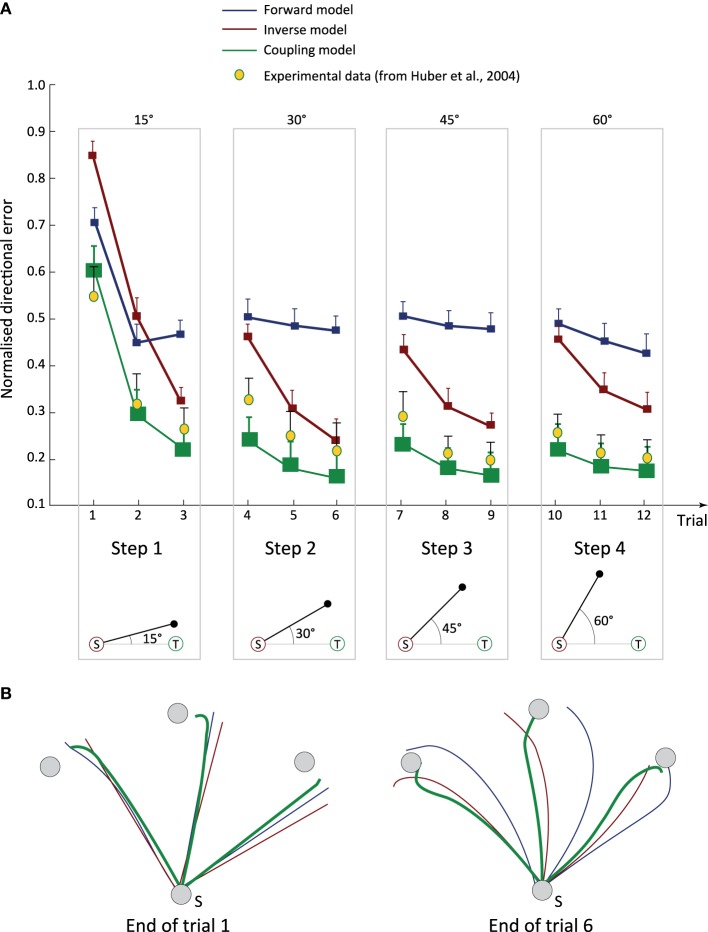Figure 3.
Coupling forward and inverse models enhances online sensorimotor adaptation. (A) Time course of directional error through training. The mean normalised directional error (averaged over all subjects) is plotted as a function of training trials. Subjects from the FM group (blue line) exhibited fast adaptation capabilities but their performance reached a plateau after a few trials. Subjects from the IM group (red lines) showed a slower learning capabilities compared to IMs, but achieved a higher level of performance once adapted to the task. Subjects using a coupled cerebellar model (i.e., CM group, plain green curves) showed the best adaptation performance, and were the only ones able to fit human experimental data (yellow dots). (B) Examples of three target-directed trajectories at two training steps. The blue dotted (resp. red dashed) lines indicate a sample solution found by a purely forward model, FM, (resp. inverse model, IM) subject. The green solid lines denote the trajectories obtained by the coupling scheme model, i.e., CM subjects.

